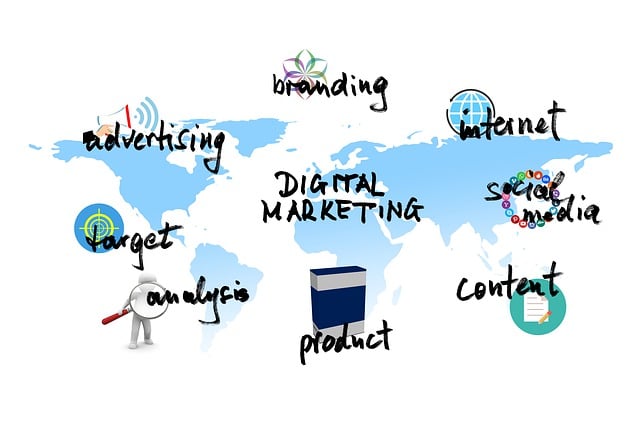In today's digital age, AI integration is crucial for RV repair shops aiming to enhance efficiency and maintain competitiveness. By automating tasks like diagnostic procedures and inventory management using AI tools, technicians focus on intricate repairs, increasing productivity, reducing service times, and improving customer satisfaction. AI coaching strategies predict common repair issues through machine learning analysis, offering personalized solutions. Embracing these tools revolutionizes shop operations, fostering efficiency, proactivity, and profitability. Implementing AI strategies optimizes RV repair workflows, providing a competitive advantage in the market through enhanced effectiveness and cost reduction.
In today’s digital era, integrating AI into traditional industries like RV repair shops is revolutionizing service efficiency. This article explores AI coaching strategies tailored for RV repair businesses, focusing on how AI tools can optimize workflows and streamline operations. We’ll delve into the key AI technologies, provide a step-by-step guide to implementation, and highlight best practices for leveraging these game-changing strategies. By embracing AI, RV repair shops can enhance productivity, reduce costs, and deliver exceptional customer experiences.
- Understanding AI Integration in RV Repair Shops
- Key AI Tools for Streamlining RV Repair Workflows
- Implementing AI Strategies: A Step-by-Step Guide
Understanding AI Integration in RV Repair Shops

In today’s digital era, AI integration is no longer a futuristic concept but an essential strategy for RV repair shops to optimize their workflows and stay competitive. By implementing AI tools, these businesses can automate repetitive tasks, such as diagnostic procedures and inventory management, freeing up valuable time for technicians to focus on more complex repairs. This not only enhances efficiency but also improves customer satisfaction by reducing service times.
AI coaching strategies play a pivotal role in this transformation. These strategies leverage machine learning algorithms to analyze vast datasets, providing insights into common repair patterns, identifying potential issues before they occur, and offering tailored solutions. With AI-driven guidance, RV repair shops can streamline their processes, reduce costs, and ensure higher accuracy rates. Ultimately, embracing AI tools for optimizing RV repair workflows is a game-changer that fosters a more efficient, proactive, and profitable shop environment.
Key AI Tools for Streamlining RV Repair Workflows

In today’s digital era, AI tools for optimizing RV repair workflows are revolutionizing the way repair shops operate. These tools, such as natural language processing (NLP) chatbots and computer vision algorithms, play a pivotal role in streamlining processes from initial customer inquiry to final handover. Chatbots can handle routine queries, schedule appointments, and even provide preliminary diagnostics based on symptoms described by customers. This not only improves efficiency but also enhances the customer experience by offering quick responses and reducing wait times.
Computer vision systems, equipped with machine learning capabilities, are instrumental in inspecting and diagnosing RV repairs. These AI tools can accurately identify damages, such as dented bodies or faulty electrical components, through image analysis. By automating these tasks, repair shops can significantly reduce manual effort, minimize errors, and ensure consistent quality. This leads to faster turnaround times, happier customers, and ultimately, a competitive edge in the market.
Implementing AI Strategies: A Step-by-Step Guide

Implementing AI strategies can significantly optimize RV repair shop workflows, making operations more efficient and profitable. Here’s a step-by-step guide to integrating AI tools:
1. Assess Current Processes: Begin by thoroughly understanding your existing workflow. Identify pain points, inefficiencies, and areas where automation could make the most impact. This could involve tasks like scheduling appointments, managing inventory, or diagnostic procedures.
2. Identify Suitable AI Tools: Based on your assessment, research and select AI tools tailored to RV repair needs. These might include predictive maintenance software for forecasting component failures, natural language processing (NLP) chatbots for customer service, or image recognition algorithms to streamline diagnostics by analyzing repair images.
3. Pilot Testing: Before full-scale implementation, trial the chosen AI tools in a controlled environment. This allows for adjustments and fine-tuning, ensuring the technology aligns with your specific requirements and workflows.
4. Training and Integration: Equip your team with necessary training on using the new AI systems. Seamlessly integrate these tools into your existing software infrastructure to ensure smooth operations and avoid disruptions.
5. Monitor Performance and Iterate: Continuously track the performance of the AI strategies, measuring their impact on efficiency, cost savings, and customer satisfaction. Regularly review and update the implementation plan based on real-world data and feedback from your team.
AI integration offers RV repair shops a powerful means to optimize their workflows and enhance efficiency. By leveraging key AI tools, businesses can streamline processes, reduce errors, and improve overall shop performance. Following a structured implementation guide ensures a smooth transition, allowing coaches to focus on providing exceptional service while technology works behind the scenes. Adopting AI strategies is a game-changer for the industry, promising a brighter future for RV repair with increased productivity and customer satisfaction.
